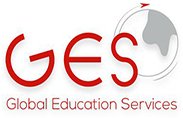Promoting Learning through Students’ Strengths
Many people are willing to enhance their lives and grow through setting goals. They look at the weaknesses and suppose about how to eliminate them.
If one has been rather to be center of attention on constructing on strengths that already exist in one’s life or on the usage of power to goal a location for improvement, the effects would be decidedly different. If one were open to the energy of ‘yes,’ and to constructing on the positive strengths already existing in one’s life, the manner of lifestyles improvement would be totally one-of-a-kind one, an empowering one.
Many of the teens have been formed in mild of their “weaknesses,” and advised that “you can’t do this” or “you are not enough.” While they have so many strengths to be celebrated that we use these as get entry to points to learning and engagement. Strengths-based training is predicated on the trust that each and every infant has the viable to learn and that the best way to develop in mastering is thru a tremendous lens.
This strength-based lens can be used in our teaching practice. We need to think about our teaching and take a look at our students. We can notice the place we see students’ strengths. We can also take these strengths and welcome them into our classroom. Students will delight in exploring their powerful minds and abilities, and their engagement and thoughts will soar.
Here are a few recommendations for how to create our very own strength-based classroom.
1. Discover the students’ strengths:
There is a range of tools and informative diagnostics that can be utilized for this purpose. One such device is discovering multiple intelligences that are comprised of seven sorts of intelligence, including musical, visual, verbal, mathematical/logical, kinesthetic, interpersonal, intrapersonal, naturalistic, and existential. We can use this online device with your students: (https://www.edutopia.org/multiple-intelligences-assessment).
An educator can additionally appear at strengths in learning preferences, social strengths, and emotional strengths. Education Professor Robin Schader created a diagnostic known as “My Learning Print” that helps educators and their students think about strengths in the class (http://gifted.uconn.edu/wp-content/uploads/sites/961/2015/09/My_LearningPrint.pdf).
2. Honor and Develop the Strengths that You Discover:
Now that we’ve determined areas where our students excel and their studying preferences, we have reached the factor the place we use this facts to inform our teaching. We need to think about methods that we can differentiate your guidance to make it a meaningful ride for a range of gaining knowledge of strengths, and the place a strength can be included to address a student’s area of need. Some college students analyze nicely by means of listening, however, others research properly through viewing, building, speaking, or even instructing others themselves. This notion is also vital at some stage in impartial and group learning times.
3. Address Areas of Need Using Strengths:
This is now not to propose that we neglect areas that they want to construct or develop. In many cases, you can use an existing strength or hobby to target these areas of need. For instance, a baby who has a problem learning to write letters should be influenced to build letters by the usage of clay or pipe cleaners. Furthermore, when students experience like they are the phase of a strength-based community, they have been shown to be extra resilient when dealing with mastering challenges and to persevere via educational adversity.
4. Create a Classroom and School Culture that Celebrates Strengths:
To integrate this cultural shift, we need to be mindful of the language that we use and make certain that it is positively framed. It is better to be trustworthy about challenges and create spaces in the study room to explore, display, and have fun strengths; inquiry/discovery centers that are power aligned, bulletin boards, and power-sharing times are all practices that make it clear that your study room is an area the place strengths are prized.
Furthermore we better Talk about our students’ strengths to our students, our administrators, different instructors at our school, and to the world beyond. By doing so, we will meet different strength-based educators and beginners with whom we can research and improve our very own teaching practices.


